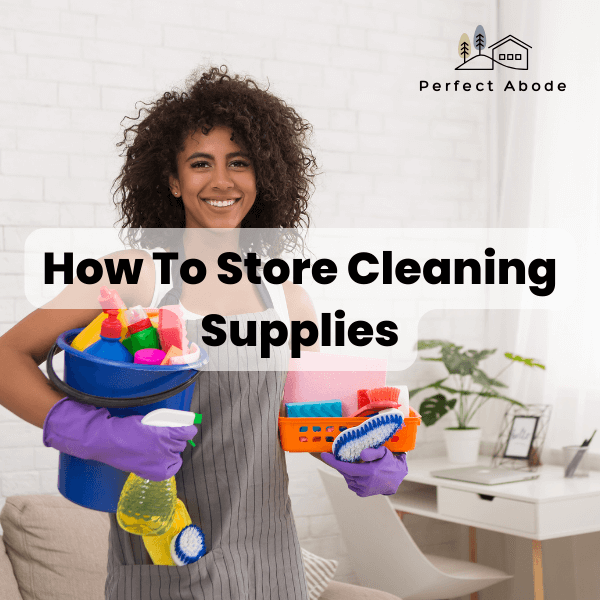Master the Art of Tidiness: How To Store Cleaning Supplies Safely and Effectively
Welcome to the essential guide to storing cleaning supplies! Whether you’re a meticulous homeowner or a dedicated cleaning professional, understanding the ins and outs of proper storage isn’t just about organization; it’s also about safety and efficiency.
Why start at the label? It holds the initial clues to maintaining a safe home environment. In this article, we delve into the crucial practice of reading labels for storage instructions, which ensures that each product maintains its effectiveness and poses no risk to your household.
We’ll also illuminate the often overlooked safety symbols, decoding their meanings so you can quickly identify the necessary precautions. Plus, don’t miss our pointers on how to spot and interpret expiry dates, a key step to avoid diminished efficacy or potential hazards.
Discover The Perfect Abode’s expert tips on efficiently storing and organising cleaning supplies for a clutter-free and organised home. From brooms to trash bags, we’ve got you covered with innovative solutions to keep your cleaning essentials in check.
Stay tuned for our top-notch strategies to keep your cleaning arsenal in top-notch condition!
Tips for Storage Solutions and Streamlining
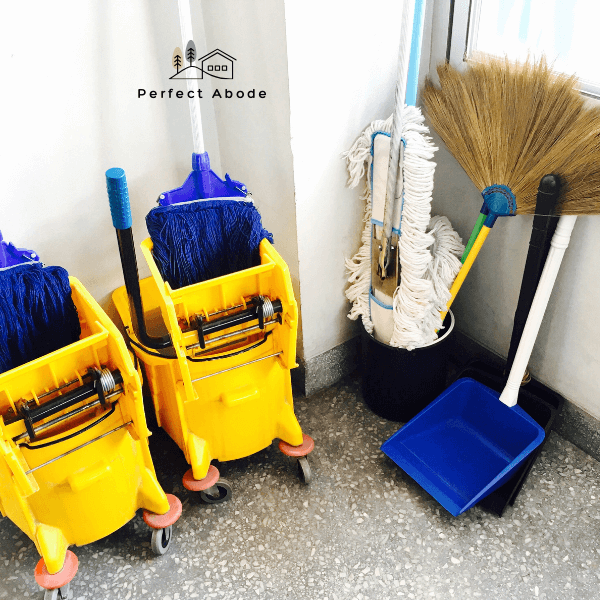
1. Properly Store Your Brooms:
Ensure your brooms stay in top condition by storing them with care. We recommend hanging brooms with synthetic or natural bristles to prevent deformation. Opt for wall-mounted holders or hooks in the bathroom, laundry room cabinets or the utility room for easy access and a tidy look.
2. Mop Organization:
Store them efficiently by hanging them or using designated mop holders. Consider individual preferences for storage spaces when choosing mop types and designate specific spots to hang them in garage or closet spaces for each to maintain a tidy and organized storage system.
3. Choosing the Right Cleaning Cloths:
Tailor your choice of cleaning cloth materials to the surfaces you’ll be cleaning, whether it’s delicate surfaces or floors that require a gentle touch or tough, durable cloths for more robust cleaning tasks. Store them in labeled containers or drawers, allowing you to easily grab the right cloth for specific cleaning tasks without a fuss.
4. Organizing Cleaning Solutions:
Emphasize the importance of efficient cleaning solutions storage. Categorize and show how to store cleaning supplies and solutions based on their intended use, grouping multi-surface cleaners, disinfectants, hang spray bottles, and specialized solutions in clearly labeled containers.
5. Trash Bags – Size and Material Matters:
Choose the appropriate size and material for your trash bags by considering the volume of waste generated and the specific needs of your household. Store different-sized trash bags in an organized manner, either on a top shelf, within a dedicated drawer, a cabinet door, a hallway closet, or a designated space, making it easy to locate the right size when needed.
Choosing the Right Storage Location
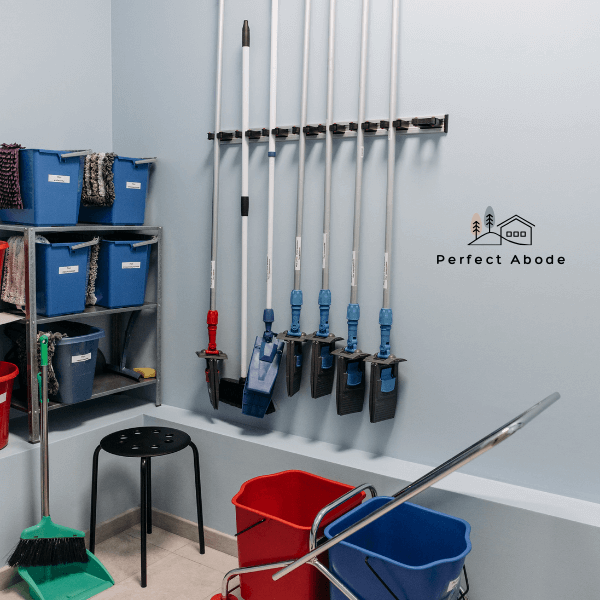
Finding the perfect spot to keep your various cleaning tools and supplies is crucial for maintaining their effectiveness and ensuring safety. Let’s dive into the factors that must be considered when selecting the right storage location.
Factors That Influence the Selection of Storage Space
When storing cleaning supplies, think about:
- Light: Excessive light can degrade certain chemicals.
- Temperature: Extreme temperatures can cause products to lose potency or even become dangerous.
- Humidity: High humidity can affect the formulation of products, especially powders and tablets.
Recommendations for Different Types of Cleaning Items
Different cleaning agents require different storage space considerations:
- Detergents: Should be kept in a cool, dry place to prevent clumping and maintain efficacy.
- Aerosols: Need to be stored away from high temperatures to prevent canisters from bursting.
Discussing the Ideal Room for Storing Cleaning Supplies
The best place to store cleaning supplies is usually a utility room or laundry room. These areas typically provide:
- Enough space for safe organization.
- Controlled temperature and humidity.
- Accessibility away from children and pets.
By considering these aspects, you’ll ensure that your appliances and cleaning supplies are stored safely and ready to use when you need them.
Child and Pet Safety Considerations

When it comes to storing cleaning supplies, ensuring the safety of our children and pets is paramount. Accidents can happen quickly, so taking proactive steps to mitigate risks is essential for peace of mind. Let’s explore some of the best strategies to keep your little ones and furry friends safe from potential harm.
Strategies to Prevent Accidental Poisoning or Exposure
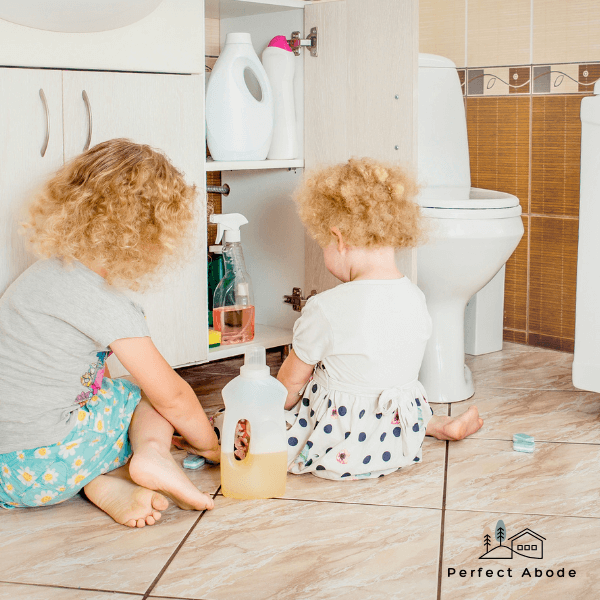
Accidental poisoning is a serious concern, especially in households with young children and pets who are naturally curious and prone to explore. Here’s how to safeguard your home:
- Store all cleaning supplies out of reach and out of sight, ideally in locked cabinets or on high shelves, to prevent accidental ingestion or contact.
- Never leave cleaning products unattended when in use, and ensure they are securely closed and returned to their storage location immediately after use.
- Keep the original labels on all cleaning products; the safety instructions and ingredient lists are crucial in the event of accidental exposure.
- Teach children about the dangers of household chemicals and the importance of not touching them.
Importance of Using Childproof Locks and High Shelves
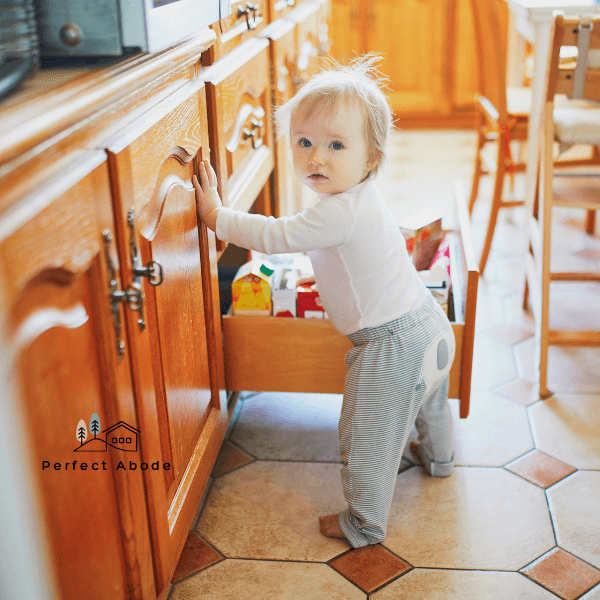
Childproof locks and high shelves are not just optional extras; they are vital components of a safe storage system for cleaning supplies. By restricting access to dangerous items, you substantially reduce the likelihood of accidental poisonings. Implement the following measures:
- Install childproof locks on all cabinets containing harmful substances.
- Use high shelves for storage, keeping potentially dangerous items well out of the reach of children and pets.
- Consider safety devices like cabinet straps or latches that require a substantial amount of dexterity to open, providing an additional layer of security.
Safe Storage Solutions to Keep Pets Away From Harmful Cleaners
Pets, particularly dogs and cats, can be quite adept at opening cabinets and climbing to places you might not expect them to reach. Hence, pet owners need to take extra precautions:
- Make sure that all storage areas are secure from clever paws, including using pet-proof garbage bins to dispose of any cleaning wipes or potentially toxic materials.
- Avoid leaving any cleaning cloths or sponges within reach that may retain residue from cleaning products.
- Store cleaning supplies in a dedicated cabinet or closet, and consider using pet deterrents like bitter apple spray or double-sided tape to discourage investigation.
By following these guidelines, you can create a safe environment for the entire family, protecting those you love most from the dangers that common household cleaning supplies may pose.
Ensuring Safe Air Quality with Proper Ventilation for Stored Chemicals
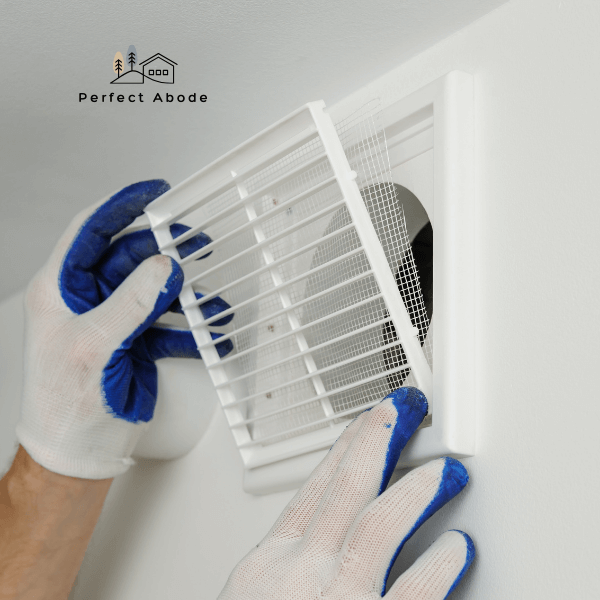
When storing cleaning supplies, particularly those with strong or potentially hazardous chemicals, proper ventilation is crucial to maintain a safe environment. Good airflow helps to disperse any fumes that may leak out, reducing the risk of inhaling toxic substances or accidental chemical reactions that could lead to fires or explosions. Understanding the need for adequate ventilation will not only help protect you and your family but also extend the life of your cleaning supplies by preventing them from deteriorating in an enclosed space.
The Importance of Adequate Airflow
Chemical-laden air can pose significant health risks if not properly managed. Storing cleaning supplies in a well-ventilated area ensures that any gases or vapors produced are safely expelled from the space, preventing the buildup of potentially dangerous air quality issues. By ensuring good airflow, you minimize the risk of chemistry-related accidents, safeguarding both people and property.
Choosing the Right Ventilation System
Depending on the layout and size of your storage space, different ventilation systems or practices may be appropriate. Consider the following options:
- Natural Ventilation: Make use of windows, vents, and doors to allow air to flow freely. This option is straightforward and cost-effective but may not be suitable for all spaces, particularly those without exterior windows.
- Exhaust Fans: Installing an exhaust fan can actively remove contaminated air. This is especially useful in areas without natural airflow.
- Climate Control: In spaces where temperature and humidity levels can be controlled, maintaining a stable environment can prevent the buildup of vapors and help preserve the integrity of the chemicals.
Remember, it is vital to check local regulations and guidelines when considering ventilation options, as they may vary depending on the types of chemicals stored and the storage volume.
Organization Techniques for Cleaning Supplies
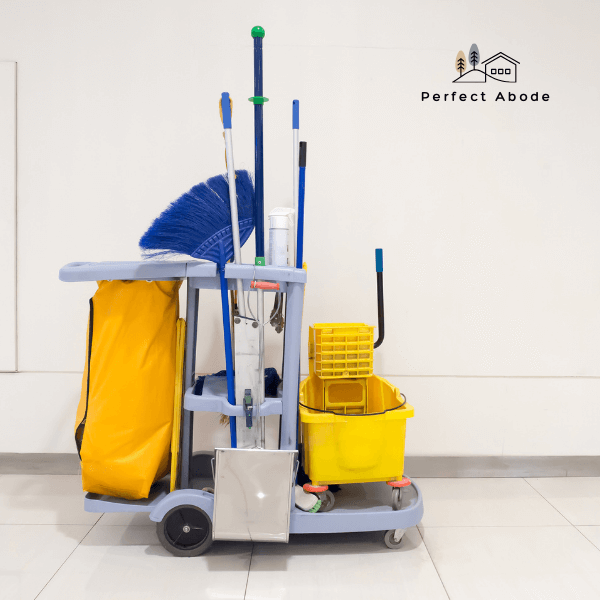
Keeping your cleaning supplies in order not only helps in maintaining a neat space but also ensures efficiency and safety when performing your cleaning tasks. A storage solution for organized cleaning supplies can make it easy to find what you need when you need it. Here are some best practices to keep your cleaning supplies well-arranged and readily accessible.
Best Practices to Maintain an Organized Storage Area
Creating a dedicated space or hallway linen closet for your cleaning supplies will make it easier to spot exactly what you need. Use these strategies:
- Group like items together: Keep all your bathroom cleaners, kitchen cleaners, and other categories in separate sections.
- Use vertical space wisely: Install shelves or a hanging organizer to utilize wall space efficiently.
- Maintain a cleaning schedule: Keep track of what supplies you use regularly and restock as needed to avoid clutter.
Utilizing Labels, Bins, and Caddies to Keep Items in Place
Accurate labeling and smart container use are the cornerstones of a well-organized supply closet:
- Label shelves and containers: Clearly label where each item should go, which helps with both finding and returning items to their proper places.
- Use clear bins or caddies: Transparent storage lets you see contents at a glance and can be easily carried from room to room.
Suggestions for Storing Frequently Used Cleaners
For items like cleaning cloths, dish soap, and towels that you reach for often, employ these tips:
- Keep them at arm’s reach: Store everyday items on a shelf at eye level or in a caddy that you can grab quickly.
- Use open containers: Hang towels on hooks or bars, and keep scrub brushes in open-topped bins for quick drying and easy access.
Preventing Cross-Contamination Among Cleaning Supplies

Keeping your home clean and safe goes beyond simply storing cleaning supplies out of reach. An essential aspect of proper storage is preventing cross-contamination, which can occur when different chemicals or cleaning tools interact in harmful ways. This part of your storage strategy ensures that cleaners remain effective and don’t pose any additional risks. Here’s how you can avoid these dangers in your cleaning routine:
Understanding Which Cleaning Products Must Not Be Stored Together
Some cleaning agents contain chemicals that, when mixed, can create toxic fumes or other hazardous reactions. Avoid storing ammonia-based products near bleach-based products, as their combination produces dangerous chloramine vapors. It’s crucial to read the labels and know the active ingredients of your cleaning supplies.
Tips on Using Separate Storage Containers or Areas for Different Kinds of Chemicals
To minimize the risk of accidents and chemical reactions, use separate, clearly labeled storage containers in the laundry room for chemical cleaners or dedicated areas in one room for distinct types of cleaners. For instance:
- Disinfectants should be stored separately from other cleaners to avoid deactivating their germ-killing properties.
- Acidic cleaners, like vinegar-based solution glass cleaner, should not be stored with alkaline products as they can neutralize each other.
- Allocate a specific shelf or bin for all-purpose cleaners to prevent them from spilling on or interacting with other chemicals.
Importance of Cleaning Storage Bins and Shelves Regularly
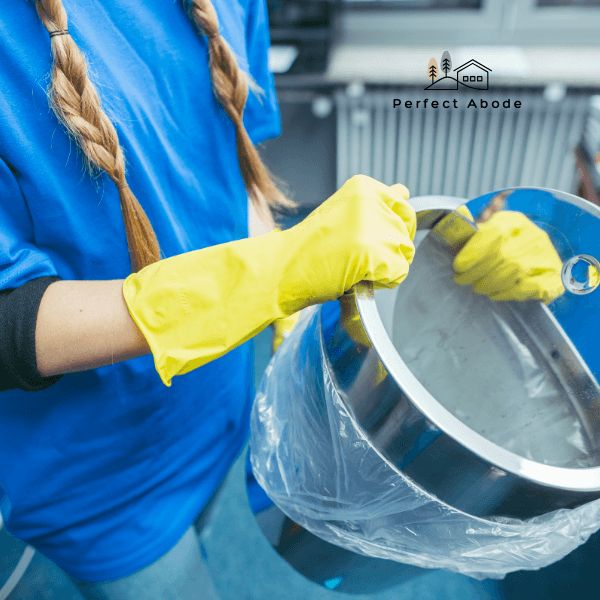
Regular maintenance of the areas where you keep your cleaning supplies is just as important as how you store them. Periodically wipe down storage bins and shelves to remove any residue or spills that might cause cross-contamination between many bottles. This routine not only maintains the integrity of your various bottles and cleaning products but also keeps the storage environment safe and organized.
Tips for Storing Large Cleaning Equipment
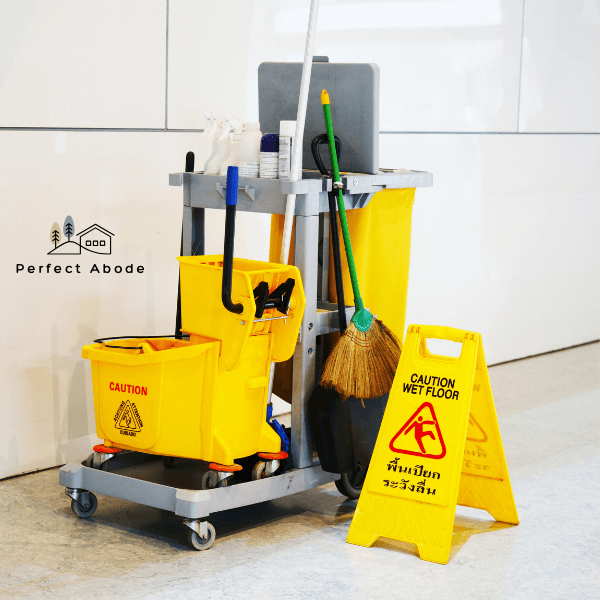
Organizing and storing your larger cleaning items, like vacuum cleaners, mops, spray bottles, and buckets, doesn’t have to mean cluttering your space. These space-saving and organization techniques can help keep the convenient space in your home tidy and your various cleaning tools and supplies within easy reach.
Space-Saving Techniques for Bulky Items
- Vertical Storage: Leverage wall space by installing s hooks or wall-mounted holders to hang mops, brooms, and even certain types of vacuum cleaners.
- Stackable Bins: Use stackable bins to store cleaning cloths and sponges, or to act as a caddy for smaller cleaning agents, freeing up floor space.
- Multi-Functional Furniture: Consider furniture like a storage bench or an ottoman with a hollow interior to store bulky items out of sight but still easily accessible.
Suggestions for Organizing Without Cluttering
- Designate a Cleaning Closet: If space allows, choose a specific closet to fill all your cleaning supplies and equipment, keeping everything in one place.
- Use Clear Bins: Clear storage containers allow you to quickly see what’s inside, reducing the need to dig through cluttered spaces.
- Categorize Equipment: Group similar items together, such as all floor care tools in one area and all polishing implements in another. This can help you find what you need without the mess.
With these helpful tips, your large amount organizing cleaning supplies and equipment can be stored efficiently, making the most of your space and ensuring all the space in your home is both clean and organized.
Handling and Storing Hazardous Materials
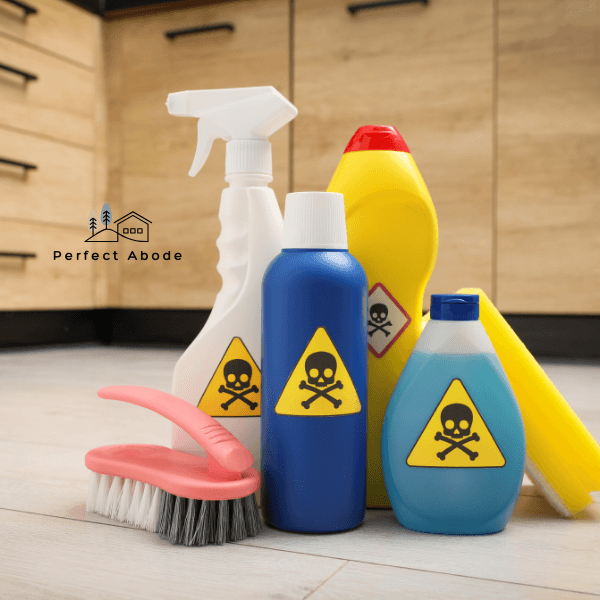
When it comes to storing cleaning products and supplies, special attention must be given to hazardous materials. These items can pose serious health and safety risks if not handled and stored properly. Below are essential guidelines for ensuring the secure storage and handling of these potentially dangerous chemicals.
Guidelines for Secure Storage of Highly Reactive or Dangerous Cleaning Chemicals
Always read and follow the manufacturer’s instructions for storage. Look for specific storage requirements, such as “keep away from direct sunlight” or “store in a cool, dry place.” If chemicals require separate storage, do not store them together with other cleaning agents to avoid risky reactions. For highly reactive materials, consider using a locked cabinet designated only for hazardous substances to mitigate the risk of accidents.
Proper Use of Personal Protective Equipment (PPE) When Handling Hazardous Items
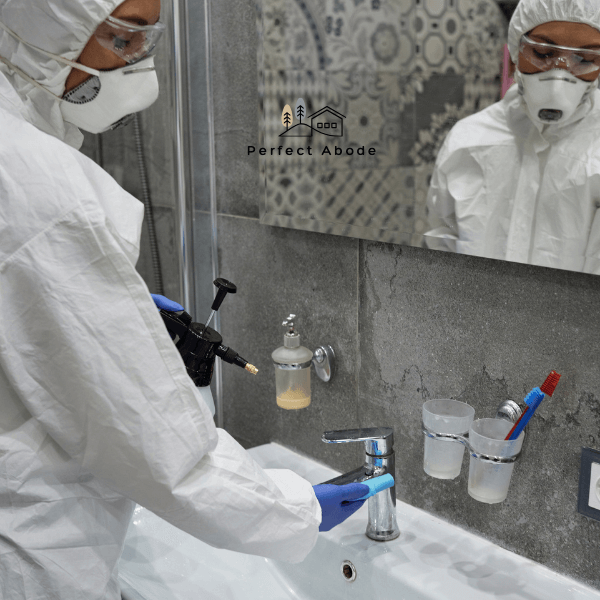
Before handling hazardous cleaning supplies, equip yourself with the correct Personal Protective Equipment (PPE). This might include gloves, goggles, aprons, or respirators, depending on the product’s potential for harm. PPE acts as a barrier between you and the chemical, reducing the risk of exposure through inhalation, ingestion, or skin contact.
Information on Disposal Practices for Hazardous Materials
Disposal of hazardous cleaning supplies should never be taken lightly. Never pour them down the drain, in the garden, or the trash as they can cause significant environmental damage and may be illegal. Check your local guidelines for hazardous waste disposal. Many communities have dedicated facilities or special collection days for safely disposing of such materials. Adhere strictly to these regulations to ensure you’re not only protecting yourself but your community as well.
- Ensure containers are properly labeled and tightly closed when not in use.
- Store in a well-ventilated area specifically outfitted to contain spills or leaks.
- Maintain an inventory to track the quantities and expiration dates of hazardous materials.
- Have a clear and accessible Material Safety Data Sheet (MSDS) for each chemical.
- Keep emergency contact numbers and a first-aid kit nearby in case of an accident.
Shelf Life and Expiration Dates of Cleaning Products
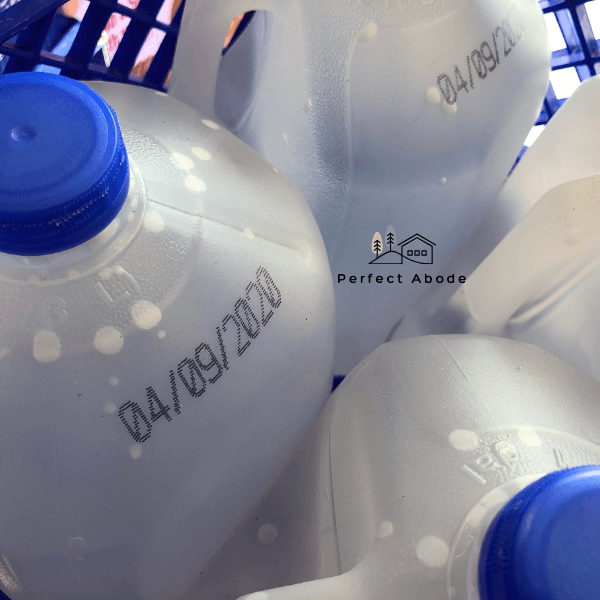
It’s not just about where you store your cleaning supplies, but also about how long you keep them. Understanding the shelf life and expiration dates of store cleaning supplies is crucial for maintaining the products’ effectiveness and, more importantly, your safety. As you organize cleaning supplies and cabinet space, take a moment to consider the following aspects.
Impact of Expired Cleaning Products on Efficiency and Safety
Expired cleaning supplies can be deceiving; they often look and smell the same but have lost their battle against grime. Using such products may result in poor sanitation, which could negatively affect the health of your household and fail to eliminate harmful bacteria. Moreover, the chemical stability of expired products can deteriorate, making them potentially unsafe to use. Be attentive to expiration labels to ensure both safety and cleanliness.
How to Monitor and Manage the Expiration Dates of Stock
Keeping track of expiration dates might seem overwhelming, but being proactive now can save you from ineffective cleaning sessions later. Start by grouping your supplies by their purchase dates and regularly check the fine print for their “use by” or “best before” dates. Consider using a digital spreadsheet or an old-fashioned label system to note the expiration dates visibly on each product’s exterior for quick reference.
Disposal Practices for Expired Chemicals
Once a cleaning product has passed its prime, it’s time to part ways responsibly. Improper disposal can harm the environment and potentially lead to dangerous situations. Check your local waste management guidelines for disposing of household chemicals. Some areas offer specific disposal stations or events for hazardous materials. Remember, flushing chemicals down the drain or tossing them in the trash can pose threats to both the environment and sanitation workers.
- Always follow the manufacturer’s guidelines for disposal.
- Investigate community hazardous waste programs.
- Never combine chemicals, as it can cause dangerous reactions.
DIY Natural Cleaning Supply Storage Solutions
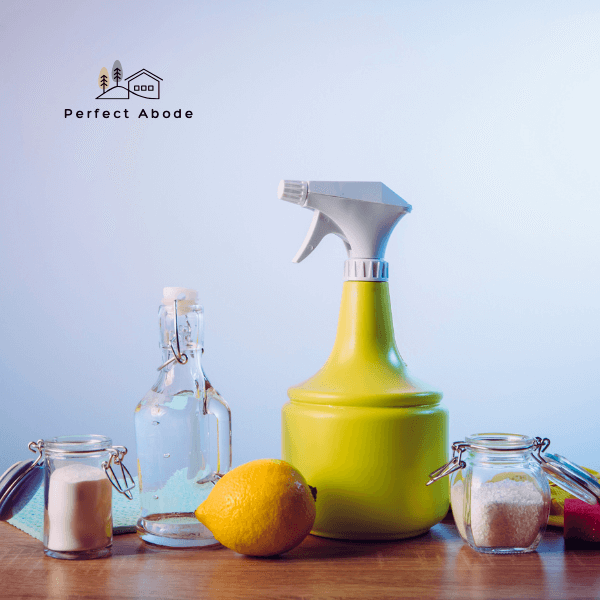
Embracing an eco-friendly lifestyle doesn’t just end with making your cleaning supplies; it extends to how you store them, too. Below, we offer unique, creative, and eco-conscious ways to keep your homemade cleaners organized and safely tucked away.
Crafting Storage with Natural Materials
Giving a second life to materials already at hand is not only resourceful but also helps in reducing waste. Consider the following DIY ideas:
- Upcycled Glass Jars: Old jars can be cleaned, labeled, and used to store homemade liquid cleaners or powders.
- Bamboo or Wooden Boxes: These can be fashioned into containers for items like scrub brushes and sponges while adding a touch of warmth to your décor.
- Repurposed Baskets: Wicker or woven baskets make charming holders for spray bottles and cloths, enhancing the aesthetic of your storage area.
Safe Storage is Key, Even For Naturals
Though natural, homemade cleaning supplies are typically milder than commercial chemicals, they still require careful handling:
- Away From Light and Heat: Store concoctions in cool, dark places to preserve their effectiveness.
- Clearly Label Everything: Never mistake a cleaning solution for something else—label jars and containers with contents and dates made.
- Childproof, If Necessary: Keep all cleaning supplies out of reach of children and pets, regardless of their natural origins.
Under the Sink Essentials
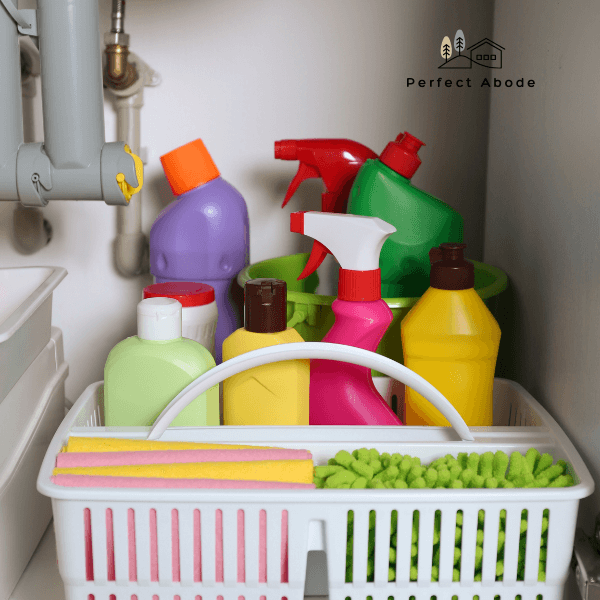
The area under the kitchen sink is a common hideout for cleaning supplies, but it can become a chaotic jumble without the right storage solutions:
- Use shallow, stackable bins to separate and organize sponges, brushes, and drain cleaners.
- Avoid mixing products to prevent accidental chemical reactions – even natural ingredients can create harmful gases or reactions when combined.
- Regularly clean the storage area surfaces with a simple mixture of vinegar and water, drying thoroughly with a cloth or towel.
Remember the Chemistry
When mixing your own cleaning products, always remember that even natural substances can have strong reactions. For instance, mixing vinegar with baking soda triggers an acid-base reaction that can be useful for cleaning, but combining certain essential oils with the wrong ingredients could render them ineffective or worse, hazardous. Educate yourself on the chemistry behind your DIY cleaners to keep your home safe and clean.
Keep Your Home Safe and Sparkling
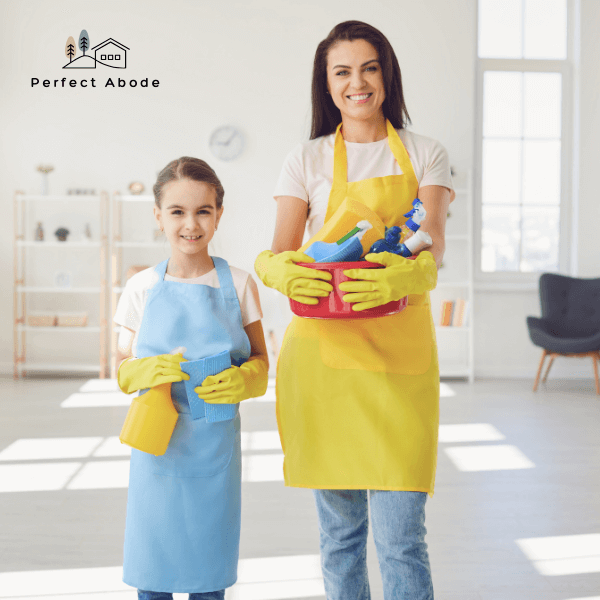
As we have journeyed through the various aspects of how to store cleaning supplies, it’s clear that taking a few precautionary steps can make a big difference. Not only does proper storage ensure the longevity of your products, but it also safeguards your family’s health and your home’s overall safety. Organizing your space and being mindful of the potency and placement of chemicals can prevent accidents and make your cleaning routine more efficient.
We encourage you to review your current cleaning supply storage, considering the information we have shared. Are your bathroom cleaner supplies accessible but secure from children and pets? Is there sufficient ventilation? Is everything clearly labeled and stored away from food and clothing to avoid cross-contamination? Taking action on these points will bring the benefits of a well-maintained toilet cleaner and safer household to life.
Act now! Re-evaluate and re-organize your cleaning supplies this weekend. You’ll feel a surge of accomplishment and relief knowing that everything is in its place—safe, clean regularly secure, and efficient.

As a professional in the home and garden industry, I’m passionate about helping people create their perfect abode. With my knowledge of design trends and expert tips, I’m here to help you find the perfect solution for all of your home and garden needs. I’m excited to share my vision and expertise with Perfect Abode!
Let Perfect Abode take the stress out of shopping – we review the best items on the market so you can save time and make the right decision for your home.
I’m an experienced home goods reviewer with a passion for helping people find the perfect products for their home. With my deep knowledge of the home goods industry and comprehensive research, I’m here to provide you with trusted reviews and reliable advice.
From the latest trends to tried-and-true classics, I’m here to help you make your house into the perfect abode.
You can read more on Elizabeth Cwtch at the following places:
https://www.youtube.com/@ElizabethCwtch/about
https://elizabethcwtch.blogspot.com/
https://elizabethcwtch.wordpress.com/
https://en.gravatar.com/elizabethcwtch
https://www.tumblr.com/elizabethcwtch
https://twitter.com/elizabethcwtch
https://www.pinterest.co.uk/elizabethcwtch/
https://www.instagram.com/elizabethcwtch/
https://issuu.com/elizabethcwtch
https://elizabethcwtch.weebly.com/
https://medium.com/@elizabethcwtch
At Perfect Abode, we understand the struggle of finding the perfect products for your home. That’s why we do the hard work for you! We collect the details and review the best items on the market, so you can save time and confidently choose the ideal products for your home. With Perfect Abode, you can trust that you are making the right decision for your home.
Yours Sincerely
Elizabeth x

